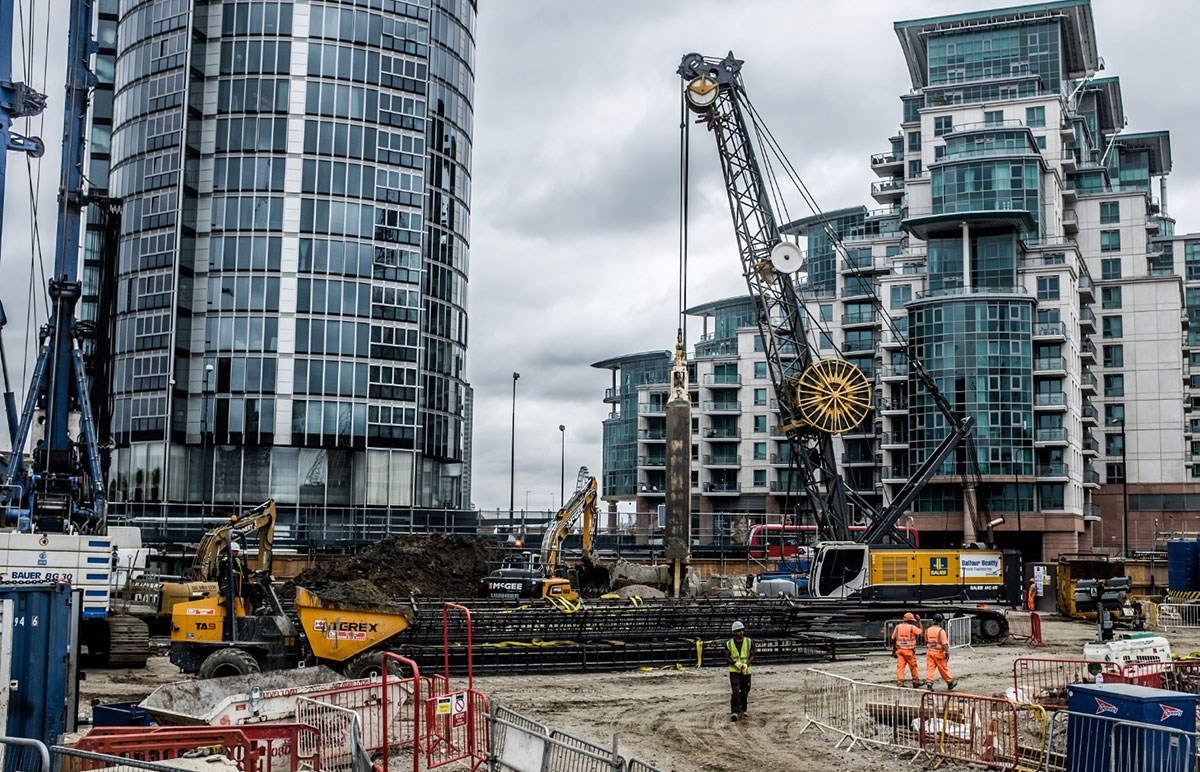Excitement About Geotheta
Excitement About Geotheta
Blog Article
The smart Trick of Geotheta That Nobody is Talking About
Table of ContentsThe 30-Second Trick For GeothetaNot known Facts About GeothetaGeotheta Can Be Fun For EveryoneGeotheta for Dummies
They collaborate with civil engineers, structural designers, architects, and various other professionals to integrate geotechnical considerations into the total task design and building procedure. This calls for reliable teamwork, sychronisation, and communication to guarantee that the geotechnical elements line up with the task purposes and fulfill governing needs.Mining & Materials Engineering: Concepts of drilling, infiltration rates, and factors impacting the option of drilling technique. Qualities of nitroglycerins, firing systems and blast patterns. Blowing up strategies in surface and below ground operations. Unique blasting techniques at excavation perimeters. Vibration and noise control. Mechanical and constant techniques to fragmentation, consisting of longwall shearing and fullface boring.
Modelling of fragment and fragment size distributions; comminution as a transfer feature. Comminution modern technology: crushing, grinding, dimension category. Integrated analysis of fragmentation and comminution procedures. Supplied by: Mining & Materials Engineering.
7 Easy Facts About Geotheta Shown
Bachelor's level programs in civil, geotechnical, geological, and ecological engineering commonly last four years and include basic education and learning courses in English, social science, and the humanities, along with programs in sophisticated mathematics, architectural geology, and fluid mineralogy. (https://www.abnewswire.com/companyname/geotheta.com_139529.html#detail-tab)
Geotechnical design includes the assessment of the soil and rock conditions at a specific site, and their effects for the development of that website. As many frameworks depend on the ground for support, it lacks shock that a comprehensive understanding of the ground problems, and the viability of foundation systems, are essential to the long-term security and efficiency of the building or framework.
Specialising in the examination of geological developments and ground behaviour, geotechnical designers perform scientific examinations and screening to understand the effect these geological formations may have on the design and building and construction of structure, civil and facilities projects. This competence is essential for the style and building and construction of structures, roads, passages, dams, bridges, and water and sewer system.
The geotechnical group at Douglas Allies routinely seek advice from with engineers, style engineers, programmers, and building contractors to make suggestions on style and advancement propositions to make certain that the constructed frameworks are suitably developed for the ground conditions. For example, the style of footing systems requires to consider the weight of the framework, the capability of the ground to sustain that weight together with movement resistances and efficient building and construction.
The Single Strategy To Use For Geotheta
This task is significantly simplified by the use our Douglas Map geospatial platform that makes this details conveniently accessible in a very easy to utilize internet internet browser interface. A geotechnical engineer will certainly direct the boring of boreholes and test pits to gather soil and other samples, and likewise evaluate surface area features and ground exposures to develop a geotechnical design of the subsurface problems.
Relying on the job type and ground problems ran into, laboratory screening may among various other points evaluate strength, compressibility, reactivity and/or leaks in the structure of soil and rock samples. After this data is gathered and collected, the results are utilized for a geotechnical design of the website, which is usually provided as sections throughout the site.

A geotechnical examination by nature can only examine the ground problems at the areas drilled or excavated. All-natural variants in dirt and rock problems can occur across a site and between examination areas. It is for that reason great practice that the geotechnical designer be retained throughout building of the job to provide on-site confirmation that the ground problems come across follow the expectations and guidance offered in the geotechnical investigation record.
Indicators on Geotheta You Should Know
Geotechnical engineers use their in-depth understanding of dirt and rock to examine risk and fix issues on varied facilities projectsGeotechnical engineering is a specialist branch of civil engineering which looks at the behaviour of planet products and the application of soil and rock technicians. Geo Tech Engineering. As a geotechnical designer, you will certainly examine the physical, mechanical and chemical buildings of dirt and rock in order to develop structures, retaining structures and earthworks
Geotechnical design is very closely linked to and overlaps with, both design geology and ground engineering - https://www.gaiaonline.com/profiles/geotheta/46779300/. It's possible to be experts in geotechnics or help a geotechnical company however be called an engineering geologist or a ground engineer. As a geotechnical designer, you'll need to: construct and keep relationships with clients and various other professionals associated with the website, throughout each projectmaintain safety and security criteria on site bear in mind cost ramifications when you make recommendationsstudy geological maps and airborne photos from a variety of resources and from various time periodsexamine building and construction prepares to see exactly how feasible they are based on your understanding of the siteinvestigate risks or geological dangers for the sitesearch for environmentally delicate features, such as garbage dump start to establish valid and interpretive ground modelsplan field investigationsdrill and analyse examples of bedrock, soil, groundwater and additional products manage various other experts on sitesolve technological problems as they emerge, such as unanticipated structures at drill sitesmonitor problems during and after construction to see to it frameworks are stable in the brief and lengthy termadding information gathered on site to your initial researchcreating geotechnical estimations, drawings, and two or three-dimensional computer system designs interpreting the datamaking referrals about the suggested use of the site

Report this page